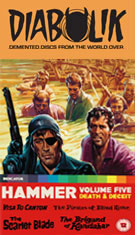
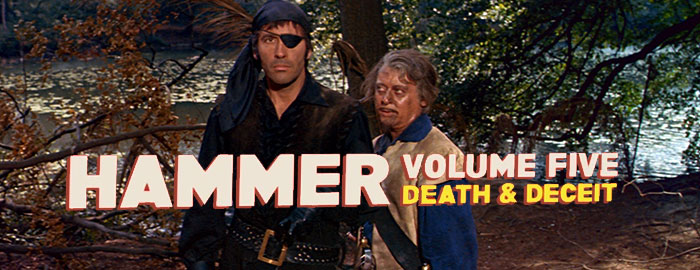
VISA TO CANTON THE PIRATES OF BLOOD RIVER THE SCARLET BLADE THE BRIGAND OF KANDAHAR
Color, 1961, 74 mins. 58 secs.
Directed by Michael Carreras
Starring Richard Basehart, Athene Seyler, Lisa Gastoni, Athene Seyler, Burt Kwouk
Indicator (Blu-ray) (UK RB HD) / WS (1.85:1) (16:9)
Color, 1962, 86 mins. 58 secs.
Directed by John Gilling
Starring Christopher Lee, Kerwin Mathews, Glenn Corbett, Oliver Reed, Peter Arne, Marla Landi, Desmond Llewelyn, Andrew Keir, Michael Ripper
Indicator (Blu-ray) (UK RB HD), Twilight Time (Blu-ray) (US R0 HD), Sony (DVD) (US R0 NTSC) / WS (2.35:1) (16:9)
Color, 1963, 82 mins. 50 secs.
Directed by John Gilling
Starring Jack Hedley, Lionel Jeffries, Oliver Reed, June Thorburn, Robert Rietti, Michael Ripper
Indicator (Blu-ray) (UK RB HD), Studio Canal (DVD) (UK R2 PAL) / WS (2.35:1) (16:9)
Color, 1965, 81 mins. 55 secs.
Directed by John Gilling
Starring Ronald Lewis, Oliver Reed, Duncan Lamont, Yvonne Romain, Katherine Woodville
Indicator (Blu-ray) (UK RB HD), Optimum (DVD) (UK R2 PAL) / WS (2.35:1) (16:9)
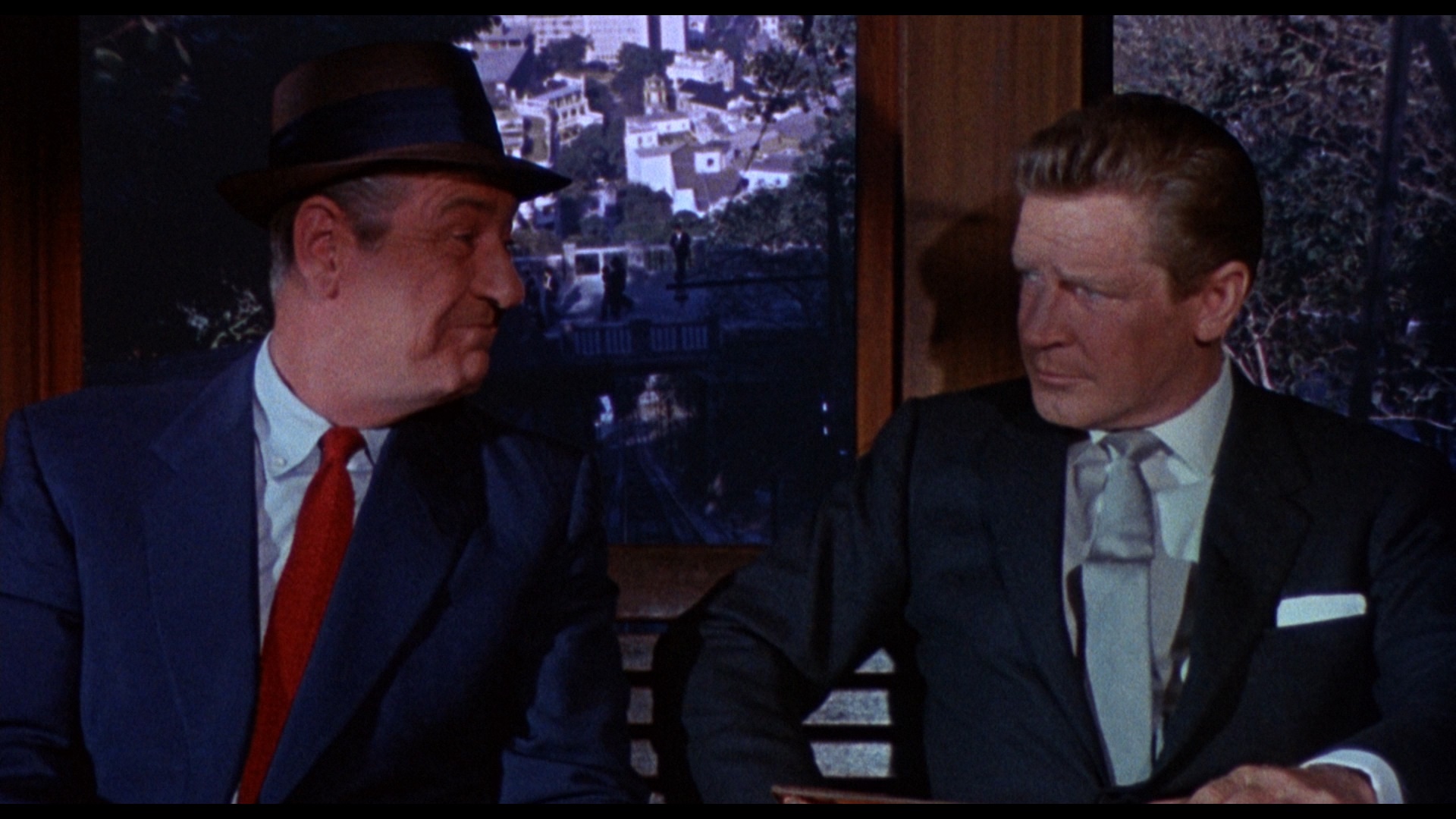 ongoing run of
ongoing run of 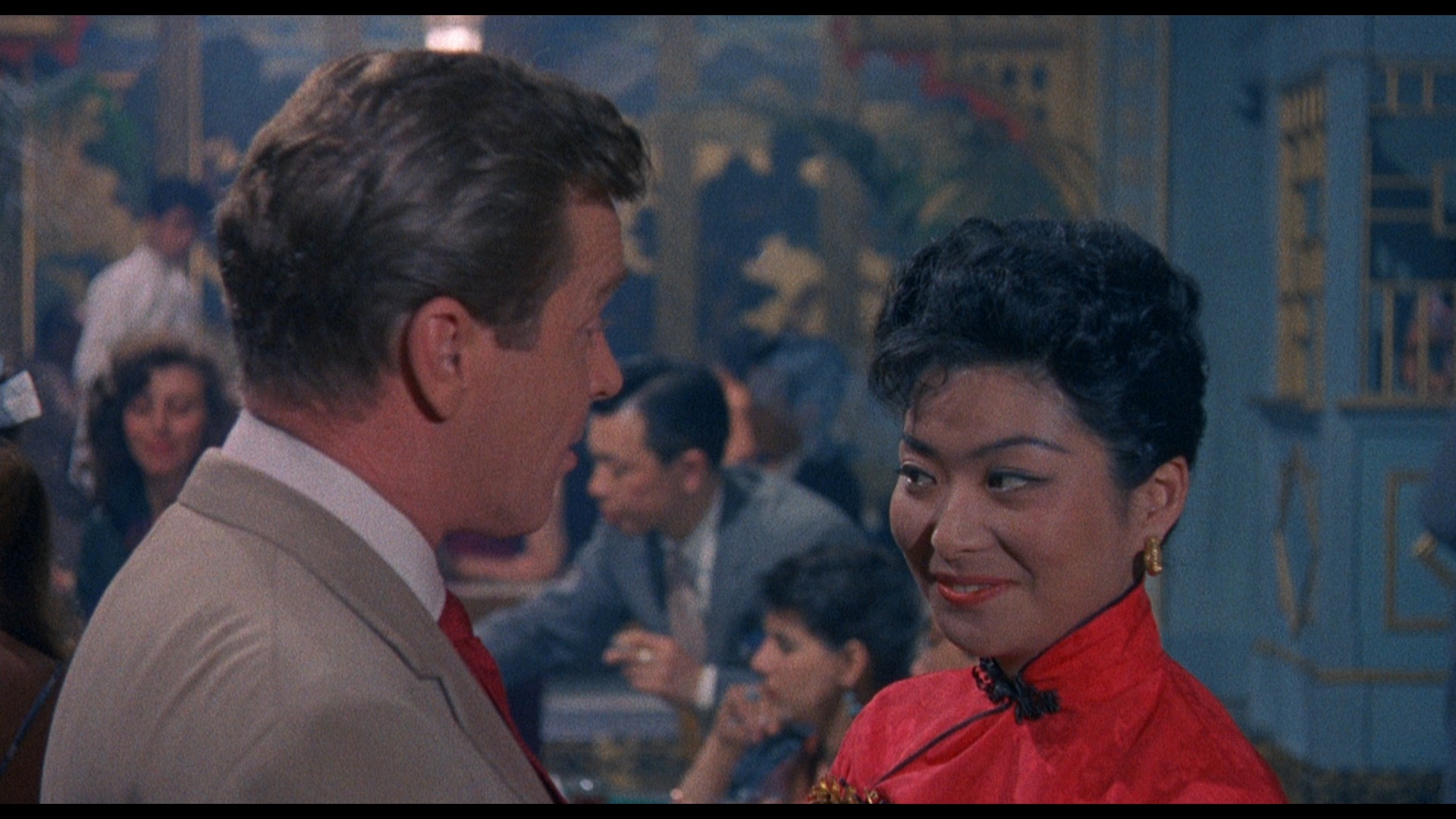 Hammer boxes has been a tantalizing mixture of the legendary and the very obscure, starting with Hammer Volume One: Fear Warning and moving on to Hammer Volume Two: Criminal Intent, Hammer Volume Three: Blood & Terror, and Hammer Volume Four: Faces of Fear. It was inevitable that they would eventually get around to the studio's adventure movie output, and sure enough that's what transpired with the 2020 limited edition box, Hammer Volume Five: Death & Deceit, which also functions as a 75% tribute to director John Gilling and actor Oliver Reed. Best known for his horror gems like Plague of the Zombies and The Reptile, Gilling was already a veteran filmmaker by the time he made those two Hammer classics and had a number of films under his belt ranging from the solid crime film The Man Inside to the superb The Flesh and the Fiends before he made the sorta-kinda Hammer film The Shadow of the Cat, opening the door for the consecutive action films included here. Limited to 6,000 units, the box can also be purchased directly from the company with an exclusive double-sided poster.
Hammer boxes has been a tantalizing mixture of the legendary and the very obscure, starting with Hammer Volume One: Fear Warning and moving on to Hammer Volume Two: Criminal Intent, Hammer Volume Three: Blood & Terror, and Hammer Volume Four: Faces of Fear. It was inevitable that they would eventually get around to the studio's adventure movie output, and sure enough that's what transpired with the 2020 limited edition box, Hammer Volume Five: Death & Deceit, which also functions as a 75% tribute to director John Gilling and actor Oliver Reed. Best known for his horror gems like Plague of the Zombies and The Reptile, Gilling was already a veteran filmmaker by the time he made those two Hammer classics and had a number of films under his belt ranging from the solid crime film The Man Inside to the superb The Flesh and the Fiends before he made the sorta-kinda Hammer film The Shadow of the Cat, opening the door for the consecutive action films included here. Limited to 6,000 units, the box can also be purchased directly from the company with an exclusive double-sided poster.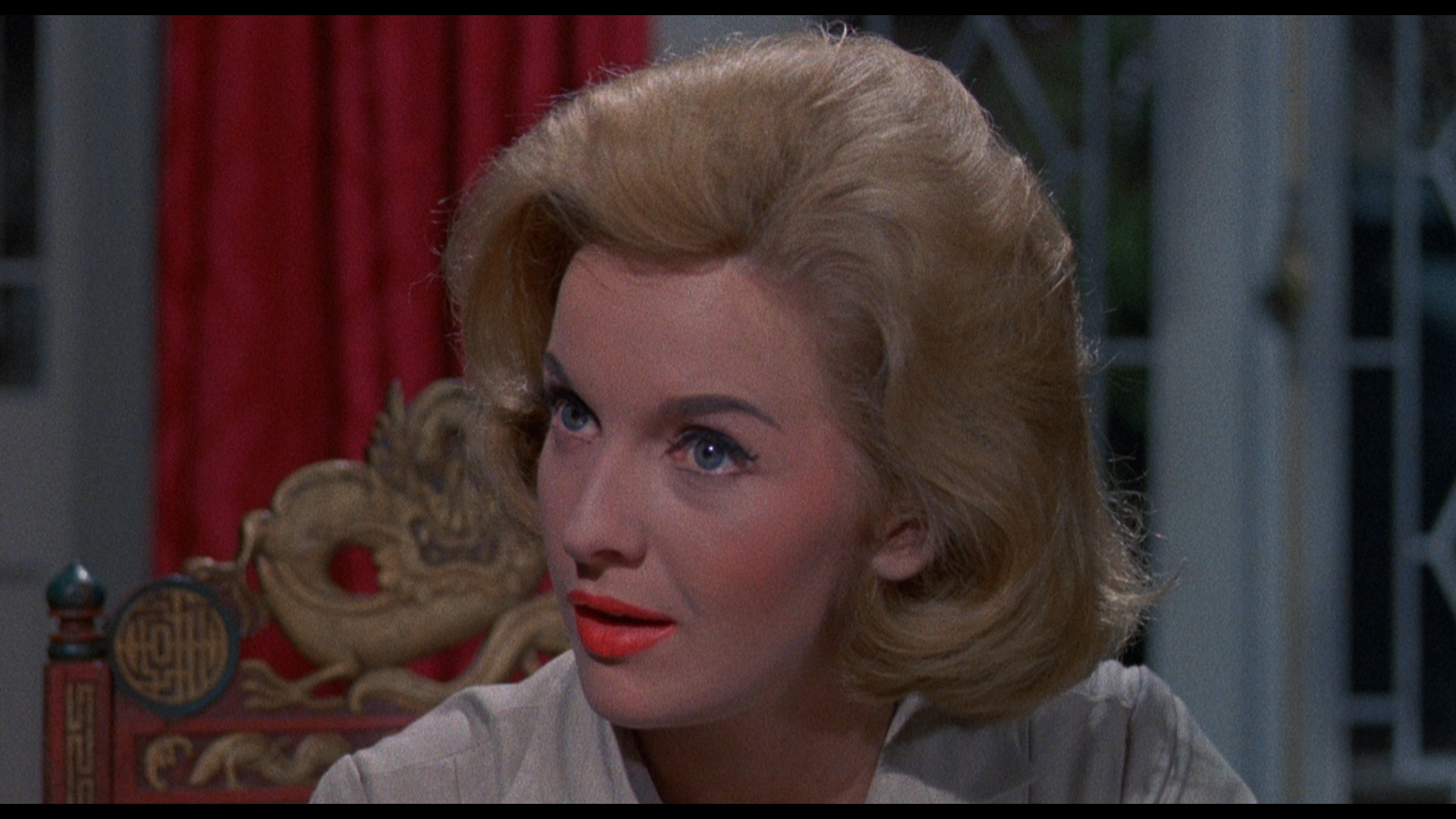 figure (Seyler). The mission turns out to be very complex indeed since the young man was flying over China at the time, and his fate is entangled with an espionage plot involving a
figure (Seyler). The mission turns out to be very complex indeed since the young man was flying over China at the time, and his fate is entangled with an espionage plot involving a 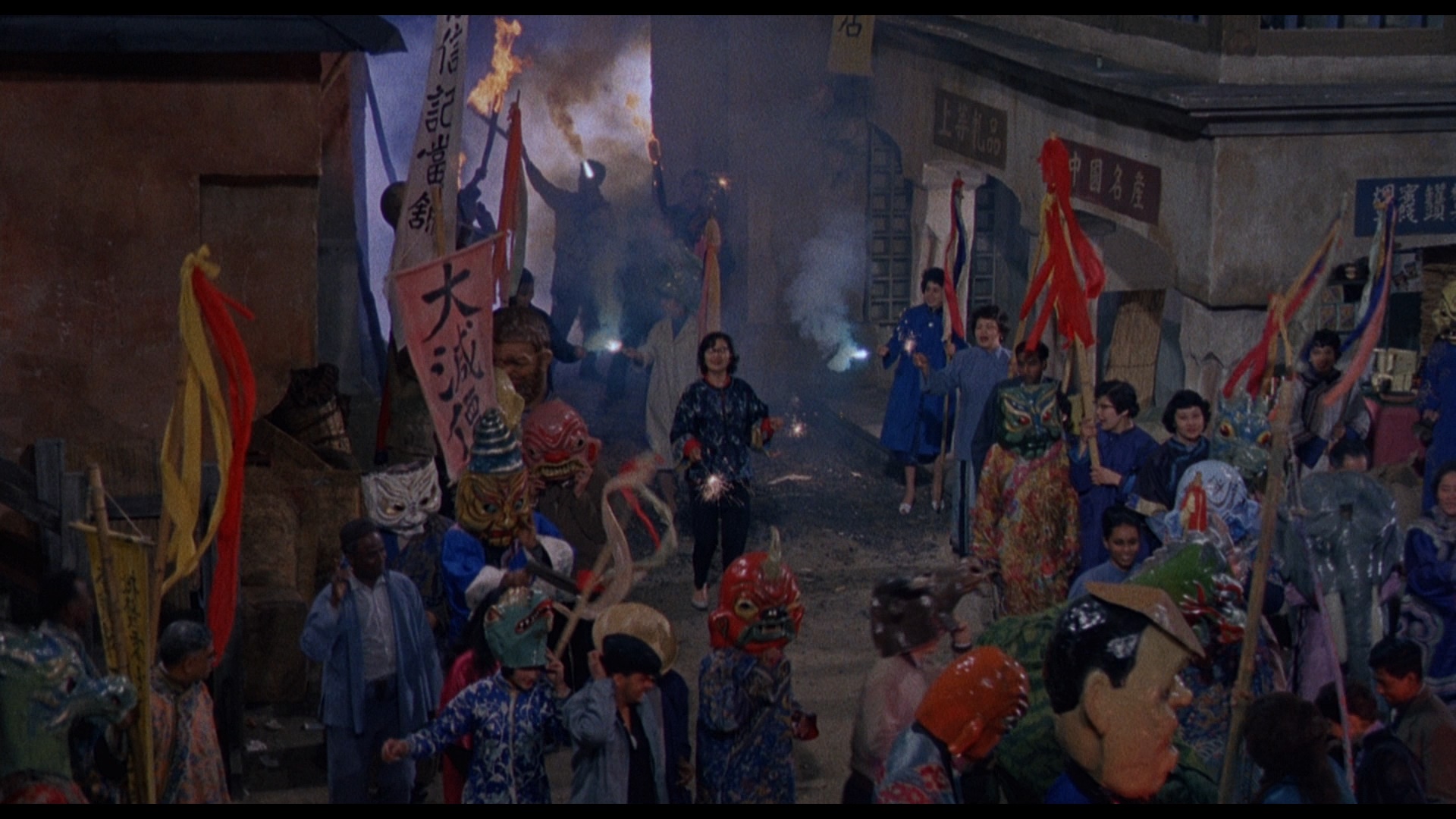 valuable scientific formula held by a beautiful agent, Lola (Gastoni).
valuable scientific formula held by a beautiful agent, Lola (Gastoni). 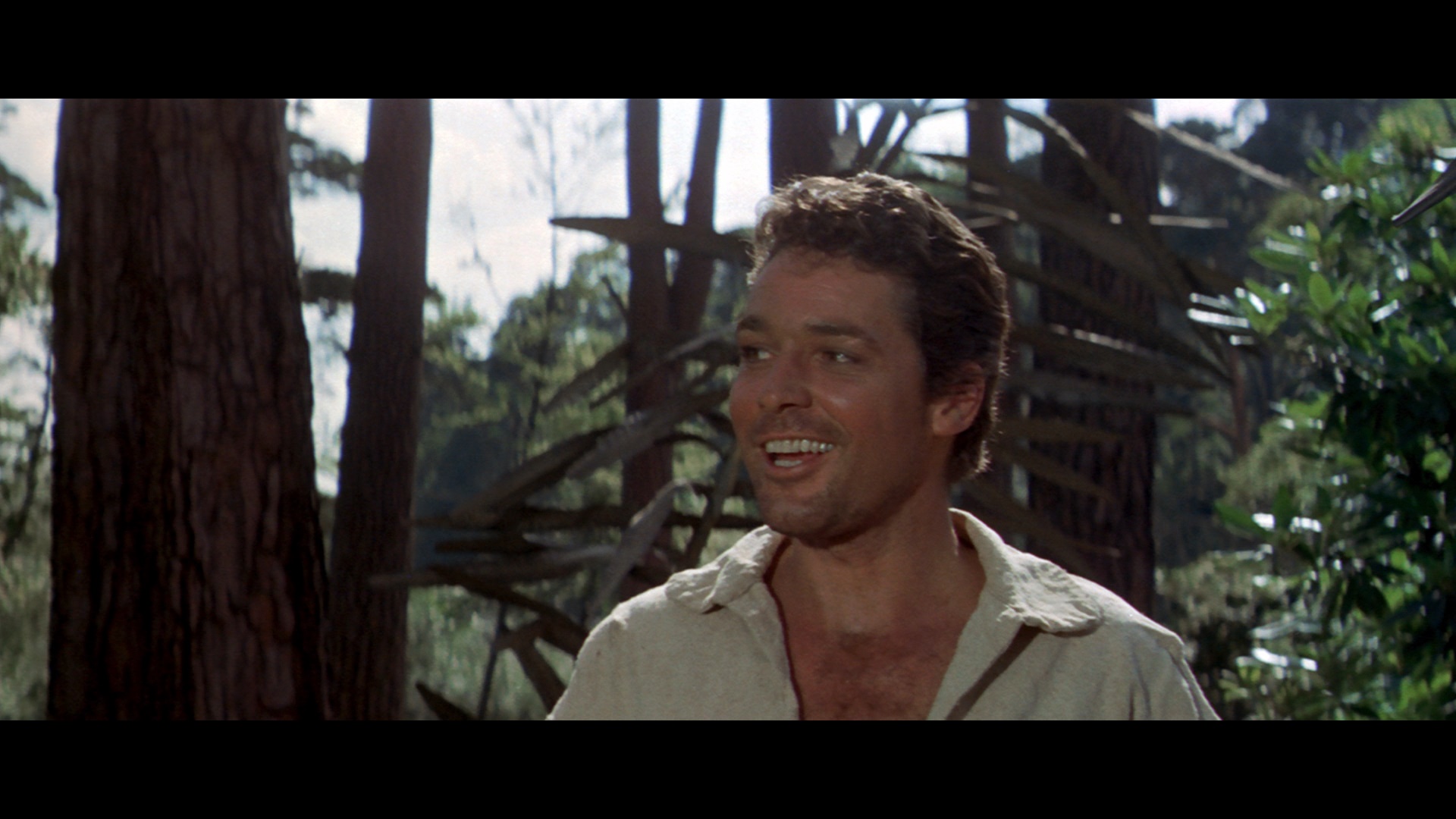 of Edwin Astley's score (which anticipates some moves made by John Barry in the 007 series). The disc closes out with the British
of Edwin Astley's score (which anticipates some moves made by John Barry in the 007 series). The disc closes out with the British 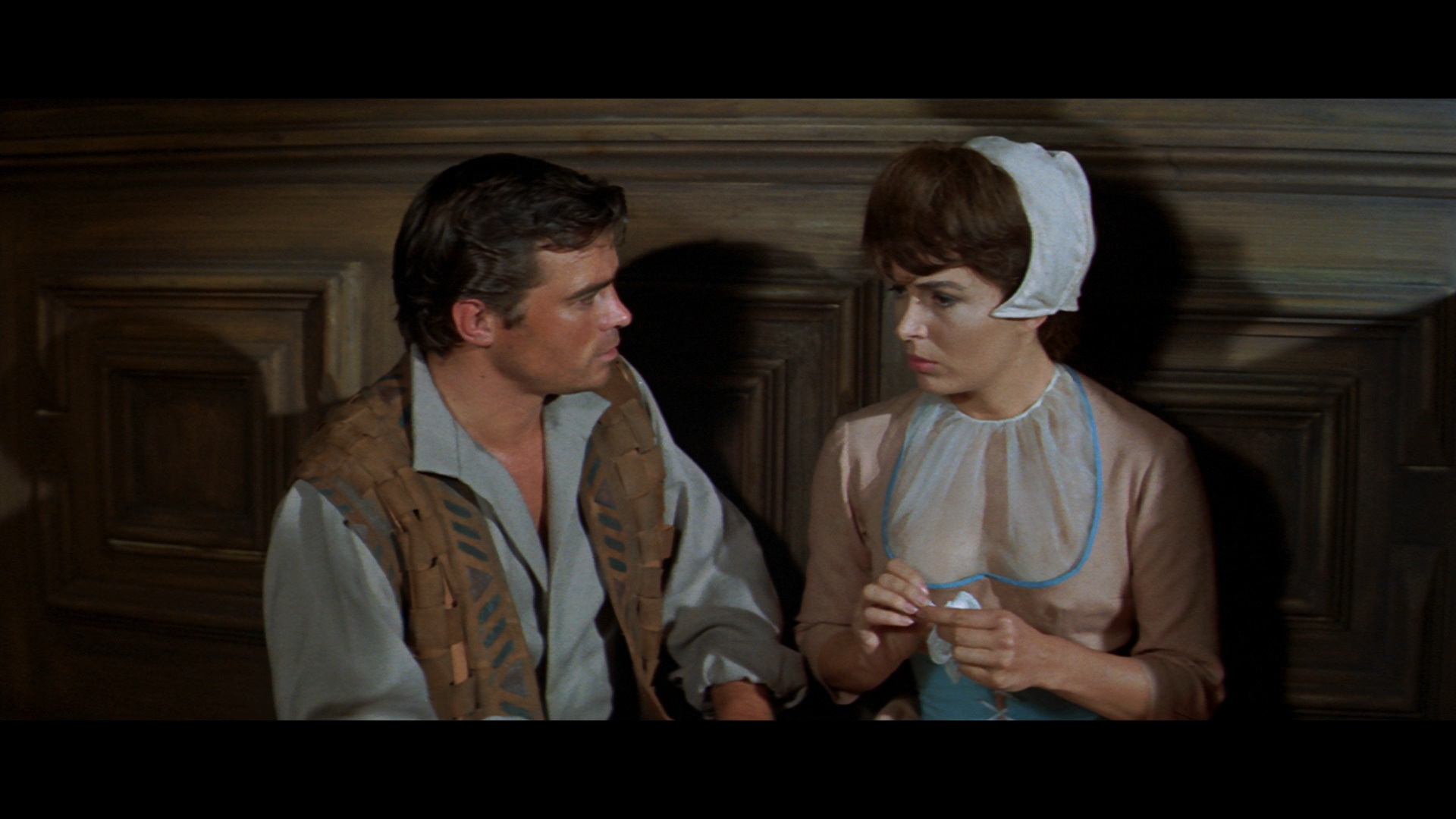 trailer, a gallery of promotional stills and lobby cards, and an insert booklet featuring liner notes by Josephine Botting, an historical sketch of the real-life RB-47 affair that inspired the story, and publicity material selections.
trailer, a gallery of promotional stills and lobby cards, and an insert booklet featuring liner notes by Josephine Botting, an historical sketch of the real-life RB-47 affair that inspired the story, and publicity material selections.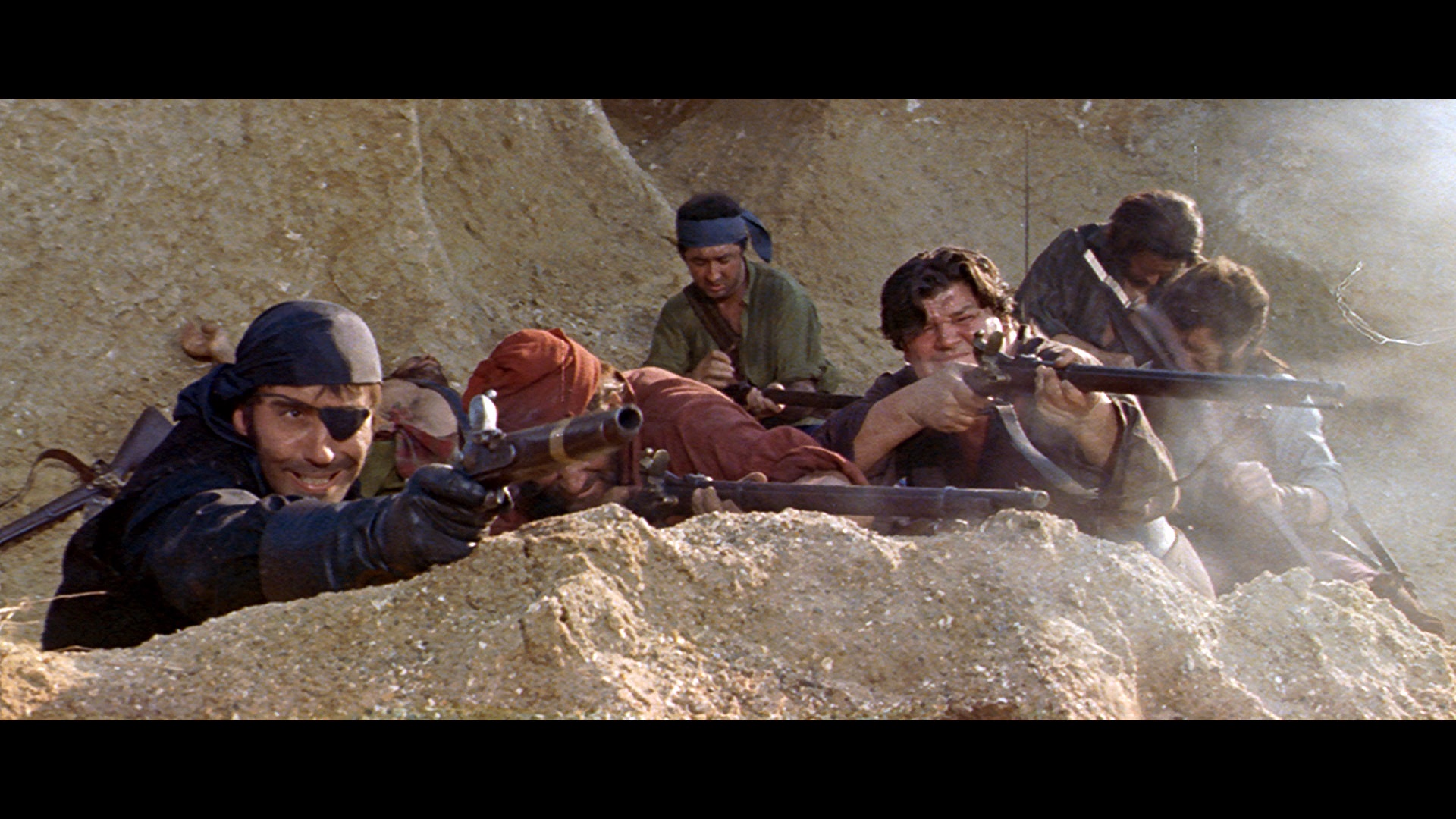 Despite some obvious budgetary shortcomings (including the now-famous inability to secure an actual pirate ship), this is a
Despite some obvious budgetary shortcomings (including the now-famous inability to secure an actual pirate ship), this is a 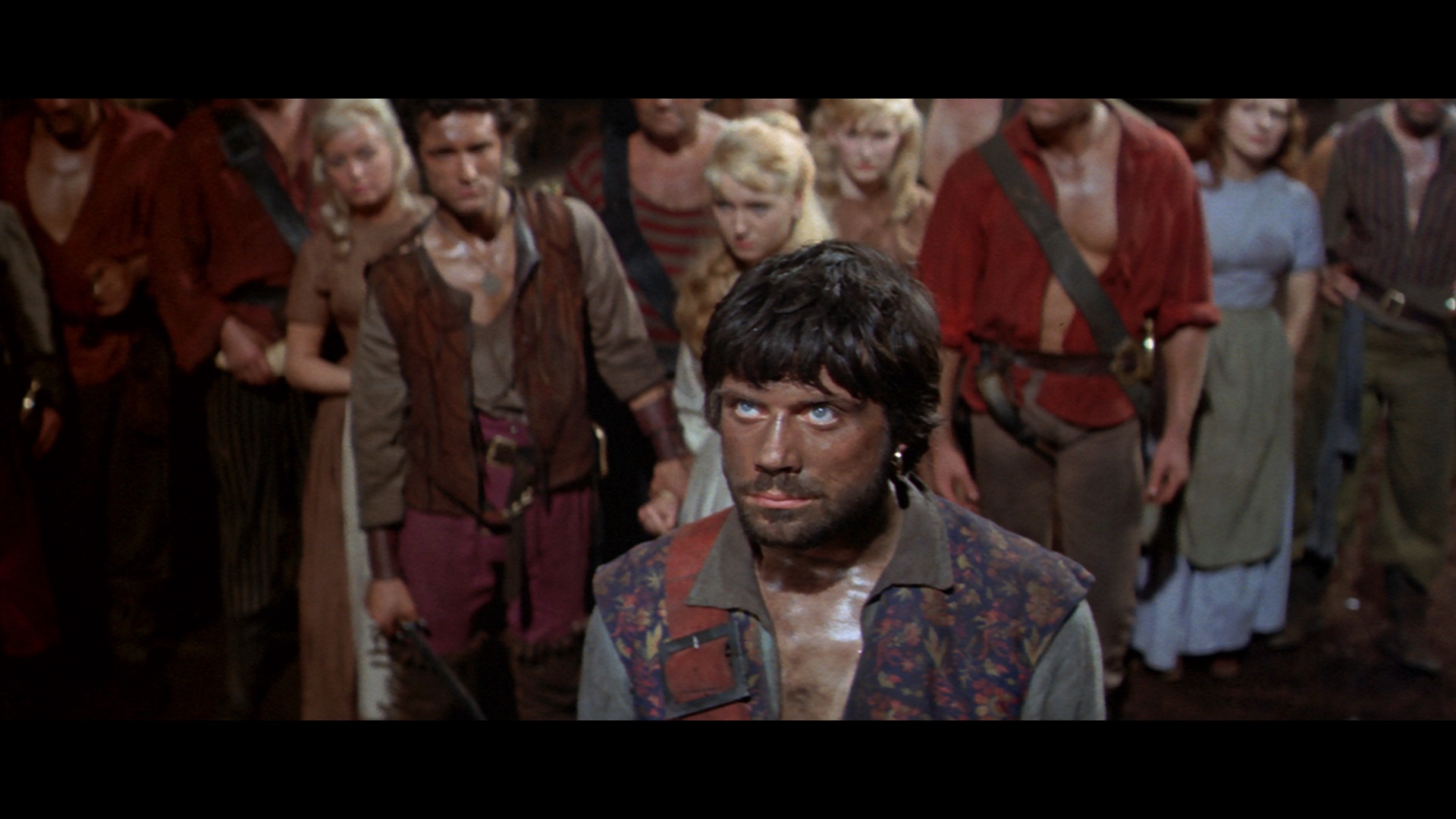 fast-moving and entertaining programmer with a few bursts of that trademark blood-red Hammer violence, including some nasty piranha action that predates You Only Live Twice by several years. Speaking of which, you also get a pre-007 Desmond Llewelyn here along with golden age Hammer mascot Michael Ripper. The Indicator disc ports over the prior audio commentary and the trailer while adding a nice slate of extra goodies as well, including an intro by horror author Stephen Law (11m34s) about the censorship issues the film faced upon its release (when it went from an X certificate film to a U, but it's uncut again now), the budgetary constraints, the accident that sidelined Corbett's participation for much of the shoot, and the connections to other adventure films around the same time. In "Hammer’s Women: Marla Landi (11m10s), film historian Kat Ellinger presents a very cheerful and interesting account of the frequently overlooked actress' cinematic contributions and their points of interest among the "model-type" actresses in demand at the time, as well as her side ventures like language courses. A vintage VHS-shot Q&A with Keir at 1993's Manchester Festival of Fantastic Films (20m16s) is a surprisingly funny chat with Laws about his time at Hammer, including his casting tricks involving hairstyle choices and the circumstances behind his last-minute casting in the very troubled Blood from the Mummy's Tomb when Peter Cushing had to bow out. In "Did I Write That?" (42m27s), Jonathan Rigby draws upon his multiple interviews with screenwriter Jimmy Sangster for an overview of the scribe and occasional director's place in Hammer history and his indispensable contributions despite his inherent lack of interest in horror, as well as the importance of his first big break involving Joseph Losey. Huckvale returns for another film score analysis with "Motifs of the Cheerful Heart" (8m20s) and points out some of the little highlights and quirks in Gary Hughes' score; plus he gets to say "lugubrious" while doing a piano demo, which is worth the watch by itself. Finally, "Yes, We Have No Piranhas" (10m37s), whose title might sound familiar to Pino Donaggio fans out there, is a video essay on the censorship history of the film in the U.K. including the two very bloody shots omitted from a key piranha attack sequence. Also included are the theatrical trailer (as well as a Trailers from Hell version hosted by Brian Trenchard-Smith)
fast-moving and entertaining programmer with a few bursts of that trademark blood-red Hammer violence, including some nasty piranha action that predates You Only Live Twice by several years. Speaking of which, you also get a pre-007 Desmond Llewelyn here along with golden age Hammer mascot Michael Ripper. The Indicator disc ports over the prior audio commentary and the trailer while adding a nice slate of extra goodies as well, including an intro by horror author Stephen Law (11m34s) about the censorship issues the film faced upon its release (when it went from an X certificate film to a U, but it's uncut again now), the budgetary constraints, the accident that sidelined Corbett's participation for much of the shoot, and the connections to other adventure films around the same time. In "Hammer’s Women: Marla Landi (11m10s), film historian Kat Ellinger presents a very cheerful and interesting account of the frequently overlooked actress' cinematic contributions and their points of interest among the "model-type" actresses in demand at the time, as well as her side ventures like language courses. A vintage VHS-shot Q&A with Keir at 1993's Manchester Festival of Fantastic Films (20m16s) is a surprisingly funny chat with Laws about his time at Hammer, including his casting tricks involving hairstyle choices and the circumstances behind his last-minute casting in the very troubled Blood from the Mummy's Tomb when Peter Cushing had to bow out. In "Did I Write That?" (42m27s), Jonathan Rigby draws upon his multiple interviews with screenwriter Jimmy Sangster for an overview of the scribe and occasional director's place in Hammer history and his indispensable contributions despite his inherent lack of interest in horror, as well as the importance of his first big break involving Joseph Losey. Huckvale returns for another film score analysis with "Motifs of the Cheerful Heart" (8m20s) and points out some of the little highlights and quirks in Gary Hughes' score; plus he gets to say "lugubrious" while doing a piano demo, which is worth the watch by itself. Finally, "Yes, We Have No Piranhas" (10m37s), whose title might sound familiar to Pino Donaggio fans out there, is a video essay on the censorship history of the film in the U.K. including the two very bloody shots omitted from a key piranha attack sequence. Also included are the theatrical trailer (as well as a Trailers from Hell version hosted by Brian Trenchard-Smith) 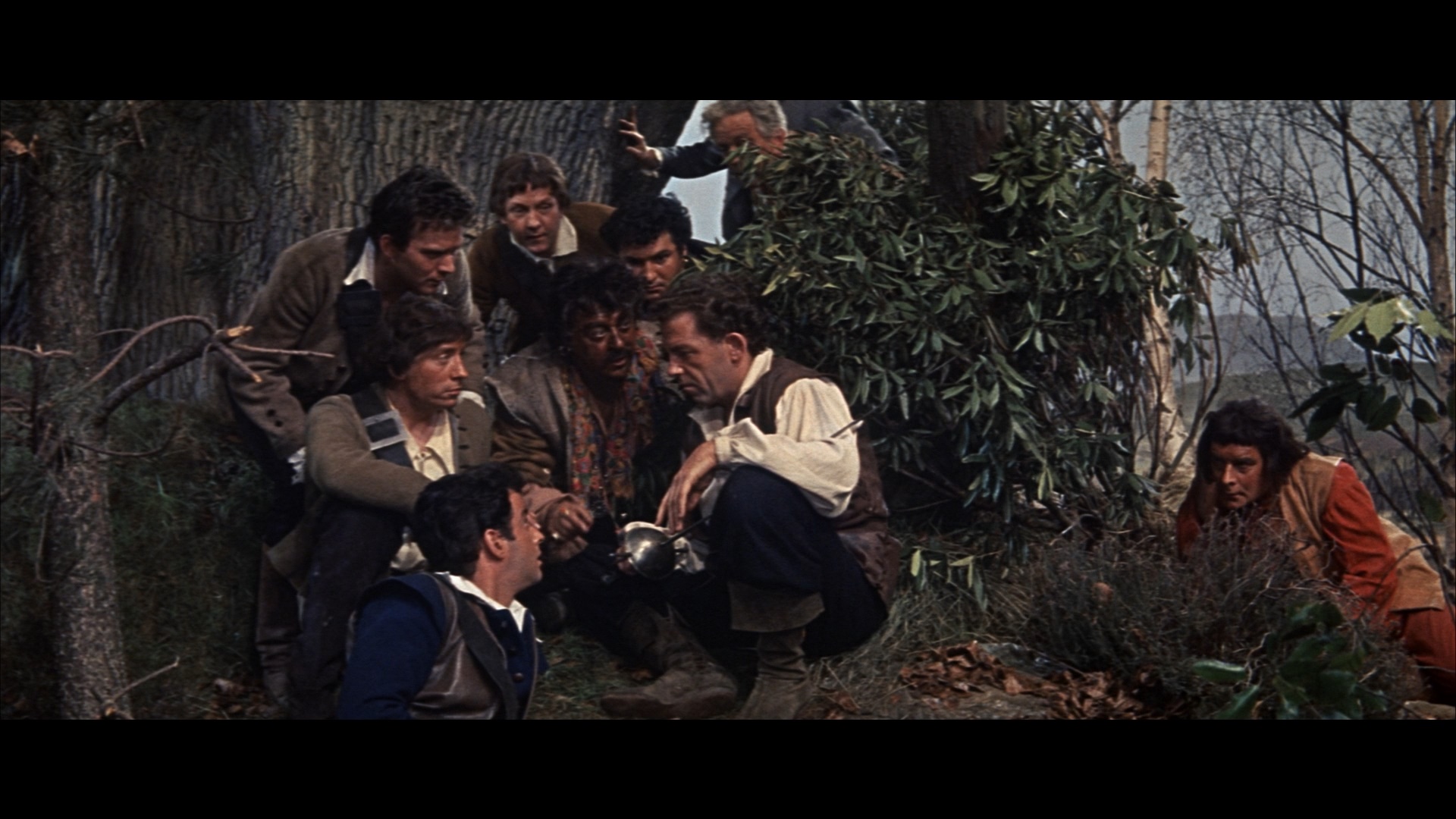 and
and 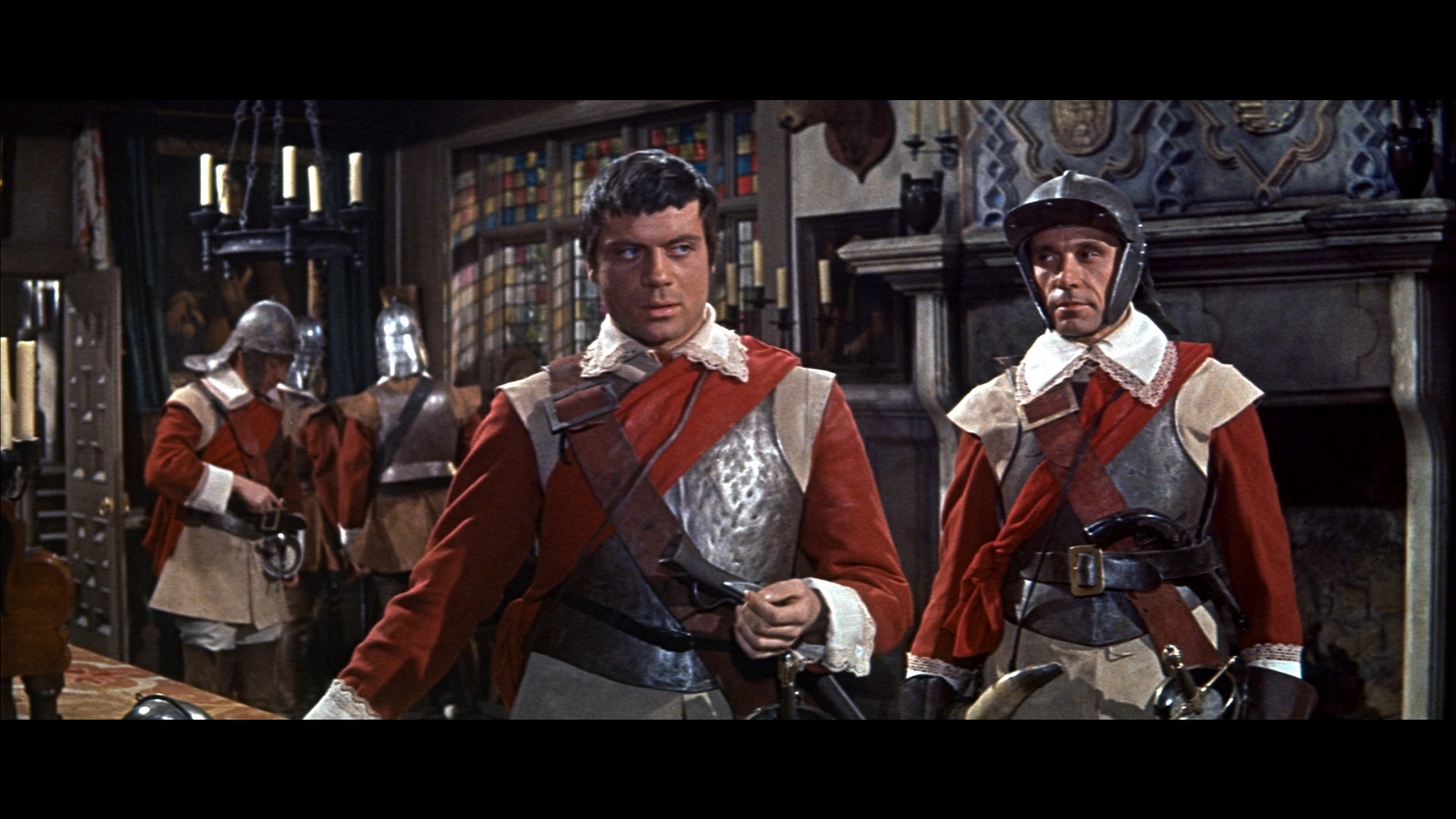 an extensive image gallery, not to mention the insert booklet with liner notes by Lindsay Hallam, an excerpt of Sangster's recollections about the film, critical reviews, and sample promotional material. The quality of the feature itself is very strong and indistinguishable from the U.S. one, which is good news.
an extensive image gallery, not to mention the insert booklet with liner notes by Lindsay Hallam, an excerpt of Sangster's recollections about the film, critical reviews, and sample promotional material. The quality of the feature itself is very strong and indistinguishable from the U.S. one, which is good news. 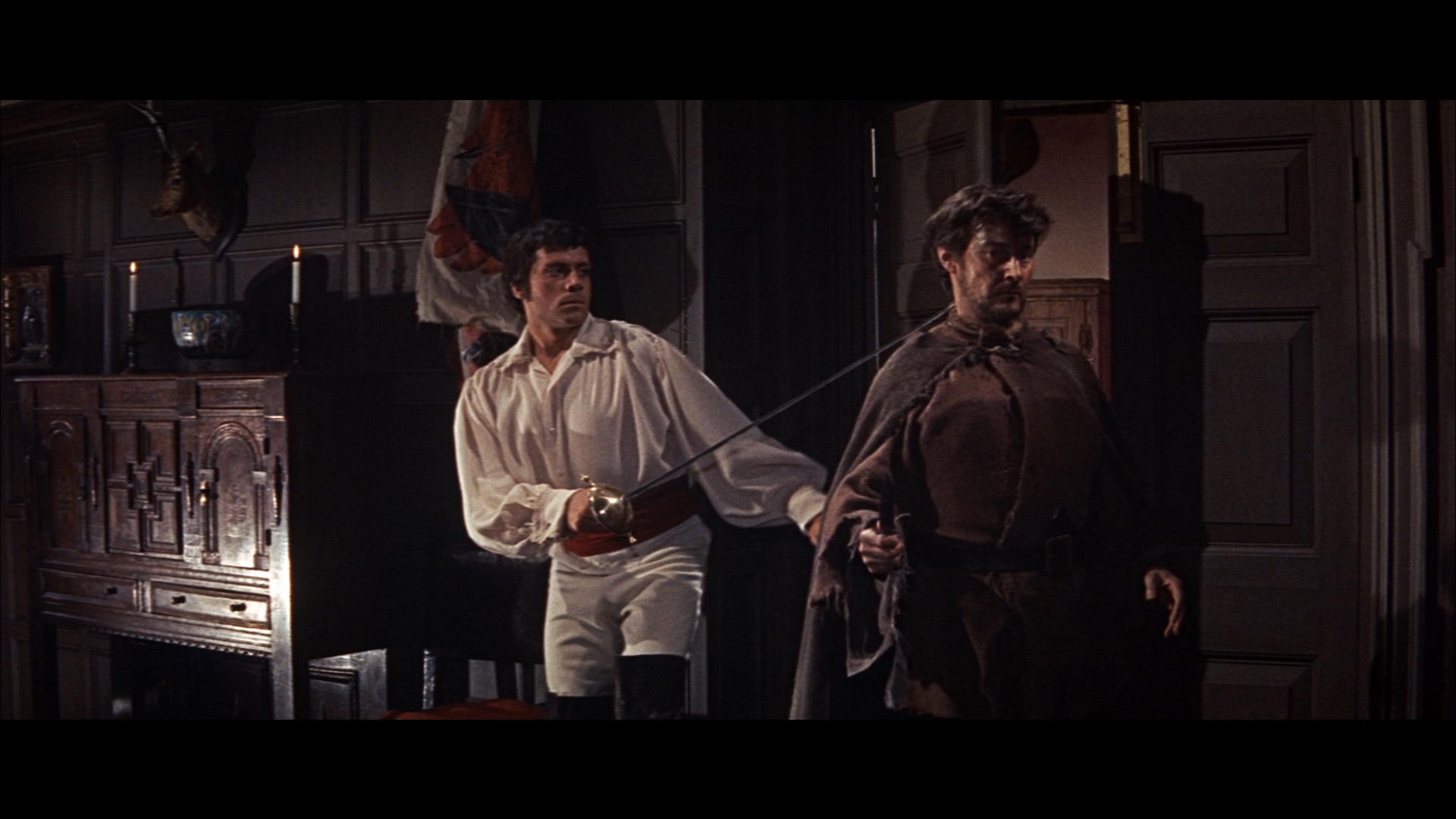 straightforward
straightforward 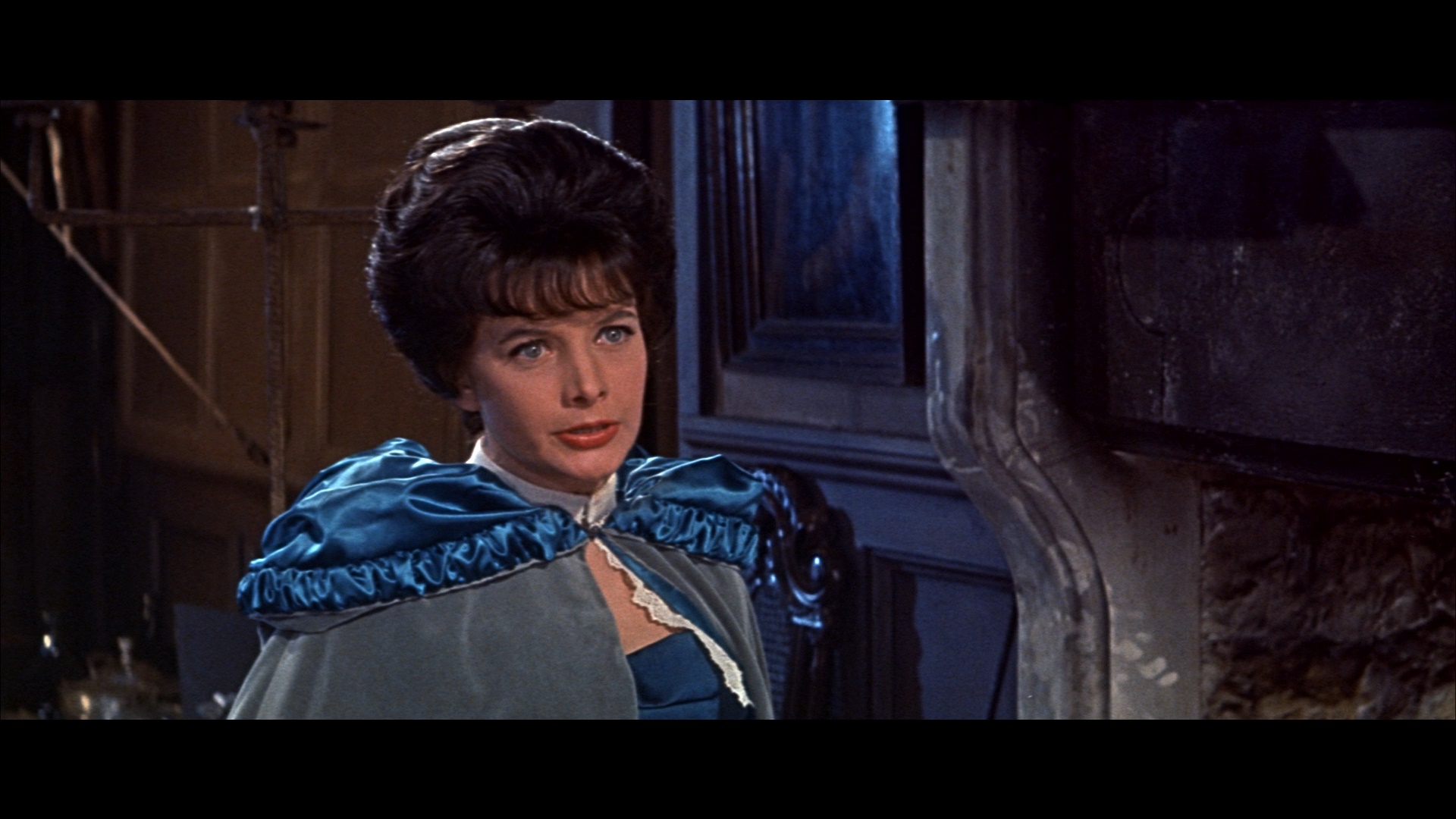 historical drama with a few scuffles thrown in and some prime explosions and combat scenes; it's also in the iffier Eastmancolor process, so the look is more drab and muted than you might expect.
historical drama with a few scuffles thrown in and some prime explosions and combat scenes; it's also in the iffier Eastmancolor process, so the look is more drab and muted than you might expect.  both indebted to Hollywood and British scoring conventions. A very faded American trailer is also included, plus the obligatory
both indebted to Hollywood and British scoring conventions. A very faded American trailer is also included, plus the obligatory 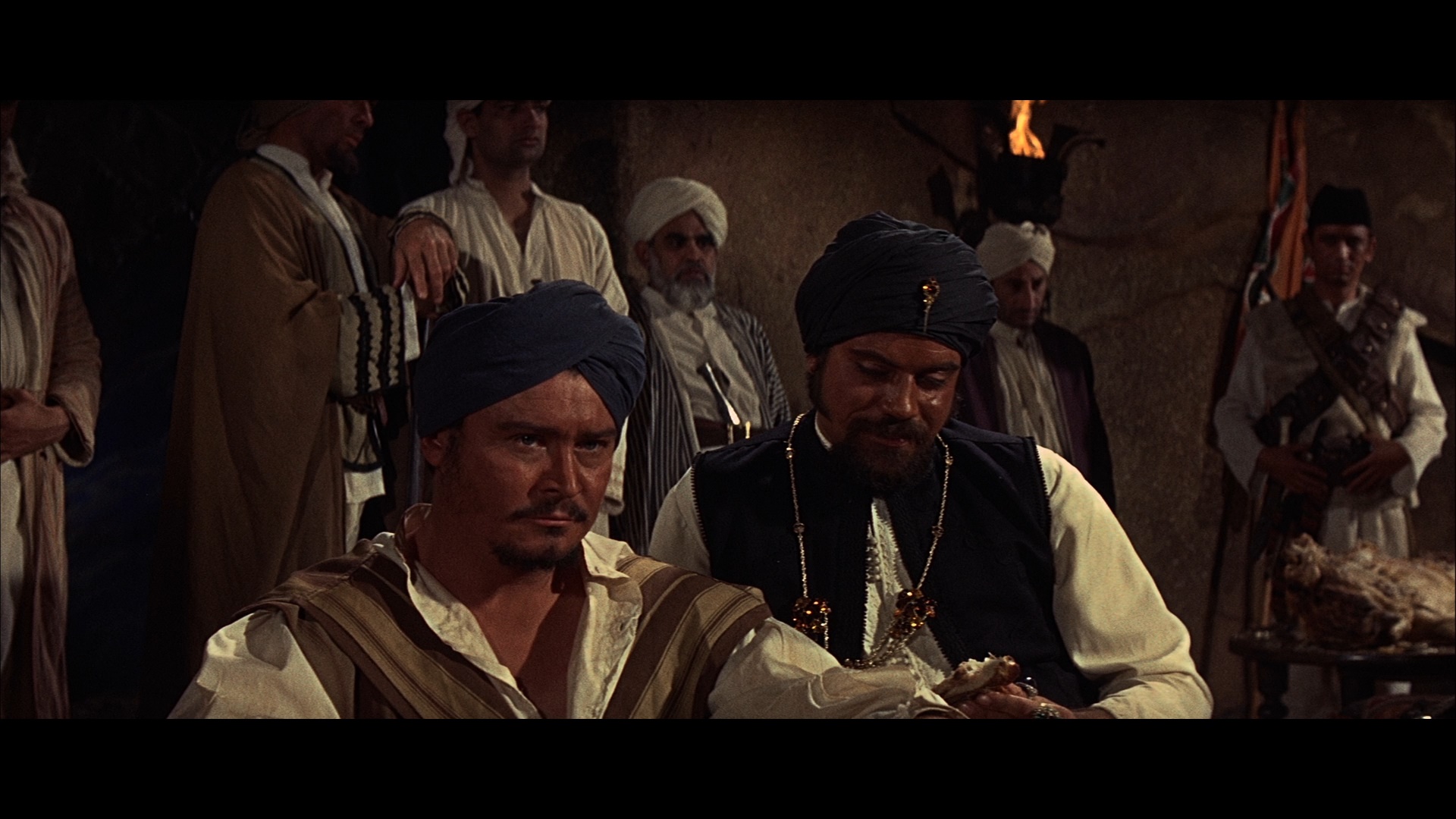 gallery of artwork and stills and an insert booklet with Neil Sinyard liner notes, a Jeff Billington essay on Reed's '60s output, publicity manual excerpts, and sample reviews.
gallery of artwork and stills and an insert booklet with Neil Sinyard liner notes, a Jeff Billington essay on Reed's '60s output, publicity manual excerpts, and sample reviews.  serves him well here as he becomes more tortured and dogged as the story progresses. The film's vibrant approach carries through in the transfer here, which looks quite solid with some lustrous bursts of red and blue
serves him well here as he becomes more tortured and dogged as the story progresses. The film's vibrant approach carries through in the transfer here, which looks quite solid with some lustrous bursts of red and blue 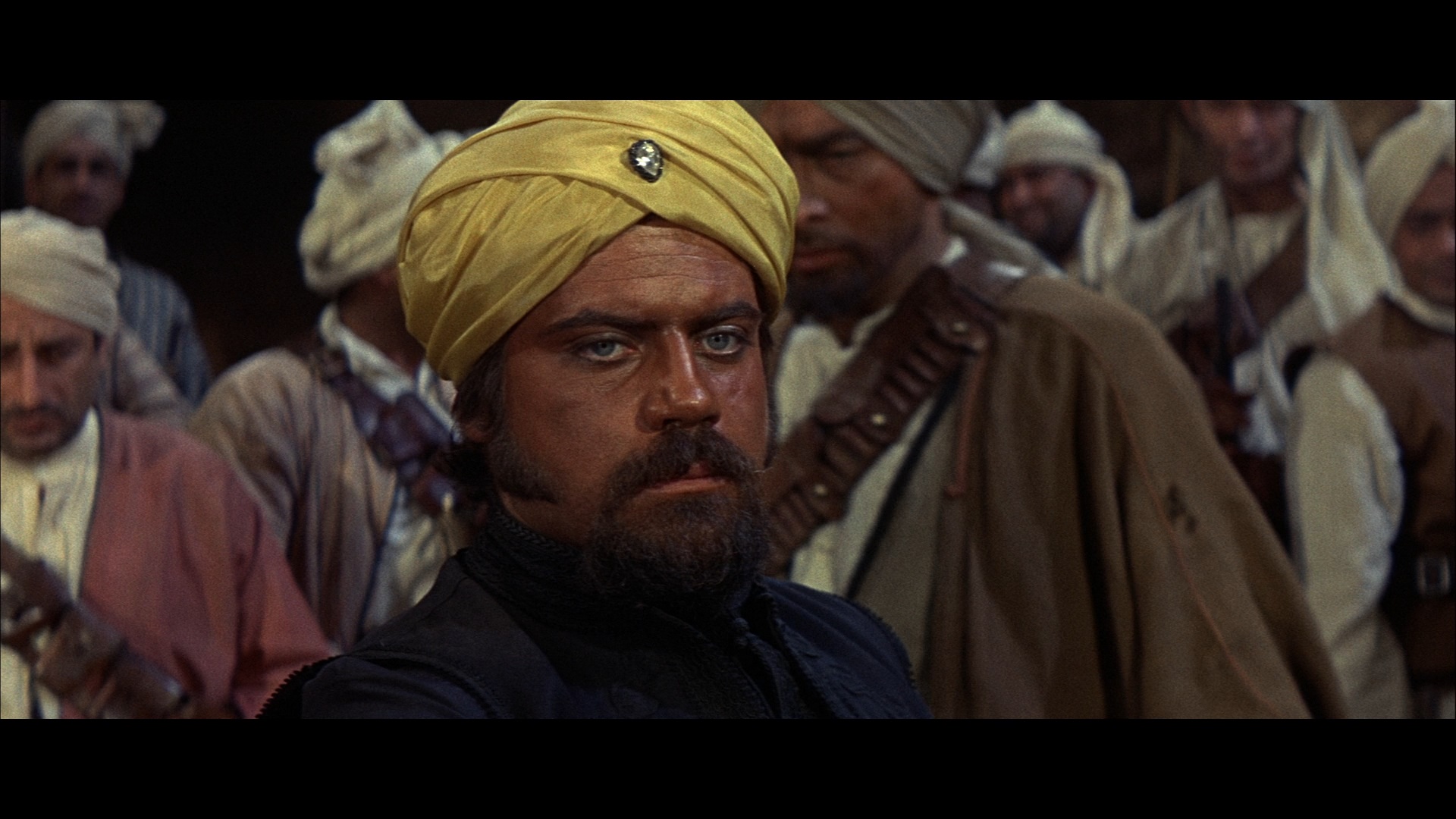 in particular throughout. No issues here really, and it's a great step up from the so-so British DVD released back in 2013. A new commentary by Pratt notes from the outset that this wasn't a beloved film by its creators or by Hammer fans, but he has a lot of affection for it and mounts a solid defense for its existence while doling out plenty of info about the production including the use of footage from Zarak and Reed's rambunctious behavior that continued here). In "Hammer’s Women: Yvonne Romain" (7m39s), film historian Melanie Williams offers insights into the actress's career from her breakthrough genre role in Corridors of Blood through her parade of "exotic" roles in other Hammer films (including this one, which neither she nor Reed wanted to make) and one-offs like Devil Doll. An intro by Laws (8m16s) places the film within the larger framework of Hammer adventure films around the same time and notes its visual spectacle when seen in proper scope, while "Adventures in Filmmaking" (19m42s) with writer Neil Sinyard revisits Gilling within the context of the history of Hammer itself alongside other filmmakers like Terence Fisher. Finally, "Afghan Ostinati" (12m45s) features Huckvale going into Don Banks' score as another variation on the military march approach with subtle commentary on the racial tension mixed into its fabric. The disc also features the British trailer and an image gallery, while the insert booklet contains liner notes by Narman Ramachandran and publicity materials.
in particular throughout. No issues here really, and it's a great step up from the so-so British DVD released back in 2013. A new commentary by Pratt notes from the outset that this wasn't a beloved film by its creators or by Hammer fans, but he has a lot of affection for it and mounts a solid defense for its existence while doling out plenty of info about the production including the use of footage from Zarak and Reed's rambunctious behavior that continued here). In "Hammer’s Women: Yvonne Romain" (7m39s), film historian Melanie Williams offers insights into the actress's career from her breakthrough genre role in Corridors of Blood through her parade of "exotic" roles in other Hammer films (including this one, which neither she nor Reed wanted to make) and one-offs like Devil Doll. An intro by Laws (8m16s) places the film within the larger framework of Hammer adventure films around the same time and notes its visual spectacle when seen in proper scope, while "Adventures in Filmmaking" (19m42s) with writer Neil Sinyard revisits Gilling within the context of the history of Hammer itself alongside other filmmakers like Terence Fisher. Finally, "Afghan Ostinati" (12m45s) features Huckvale going into Don Banks' score as another variation on the military march approach with subtle commentary on the racial tension mixed into its fabric. The disc also features the British trailer and an image gallery, while the insert booklet contains liner notes by Narman Ramachandran and publicity materials.